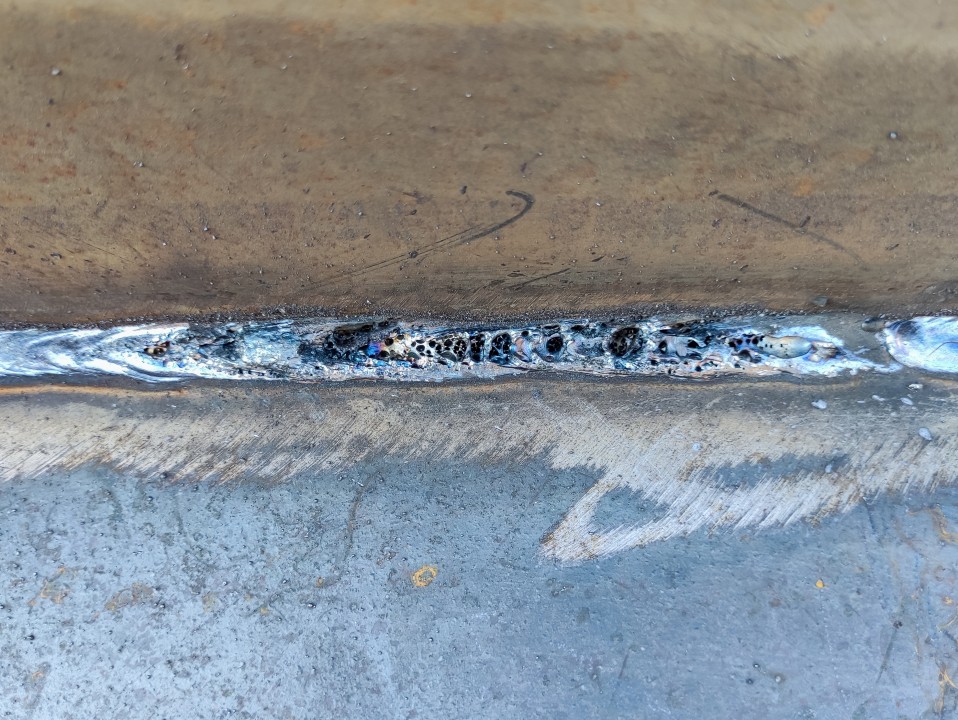What is Porosity in Welding: Crucial Tips for Achieving Flawless Welds
What is Porosity in Welding: Crucial Tips for Achieving Flawless Welds
Blog Article
Comprehending Porosity in Welding: Discovering Causes, Effects, and Prevention Strategies
As professionals in the welding industry are well conscious, recognizing the reasons, effects, and avoidance techniques related to porosity is vital for attaining robust and reputable welds. By diving right into the origin causes of porosity, analyzing its harmful results on weld quality, and discovering effective avoidance techniques, welders can improve their knowledge and skills to create top quality welds consistently.
Common Reasons For Porosity
Porosity in welding is mainly triggered by a mix of variables such as contamination, inappropriate shielding, and insufficient gas protection during the welding process. Contamination, in the form of dust, oil, or corrosion on the welding surface area, develops gas pockets when warmed, leading to porosity in the weld. Incorrect securing occurs when the protecting gas, generally utilized in processes like MIG and TIG welding, is not able to totally shield the molten weld swimming pool from reacting with the surrounding air, leading to gas entrapment and succeeding porosity. Additionally, insufficient gas insurance coverage, often because of wrong circulation prices or nozzle positioning, can leave parts of the weld unprotected, allowing porosity to create. These aspects jointly add to the formation of spaces within the weld, compromising its honesty and potentially triggering architectural concerns. Recognizing and resolving these usual reasons are essential action in protecting against porosity and guaranteeing the top quality and strength of welded joints.
Results on Weld Quality
The visibility of porosity in a weld can considerably compromise the overall quality and integrity of the welded joint. Porosity within a weld develops spaces or tooth cavities that deteriorate the structure, making it extra prone to fracturing, rust, and mechanical failing. These voids act as stress concentrators, decreasing the load-bearing capability of the weld and enhancing the likelihood of premature failing under applied anxiety. On top of that, porosity can likewise function as potential sites for hydrogen entrapment, additional exacerbating the degradation of the weld's mechanical residential properties.
Moreover, porosity can hinder the effectiveness of non-destructive screening (NDT) strategies, making it challenging to detect various other problems or suspensions within the weld. This can cause substantial safety problems, particularly in critical applications where the structural honesty of the welded parts is vital.

Avoidance Techniques Introduction
Offered the damaging effect of porosity on weld high quality, efficient prevention techniques are important to preserving the structural stability of welded joints. Additionally, picking the ideal welding criteria, such as voltage, present, and take a trip speed, her latest blog can aid reduce the risk of porosity formation. By incorporating these avoidance strategies into welding techniques, the incident of porosity can be significantly reduced, leading to stronger and extra dependable bonded joints.
Significance of Appropriate Protecting
Proper shielding in welding plays an important function in preventing atmospheric contamination and making certain the integrity of welded joints. Protecting gases, such as argon, helium, or a combination of both, are commonly made view it now use of to protect the weld swimming pool from reacting with components airborne like oxygen and nitrogen. When these reactive elements enter contact with the warm weld pool, they can cause porosity, resulting in weak welds with minimized mechanical residential or commercial properties.

Insufficient protecting can cause numerous issues like porosity, spatter, and oxidation, compromising the architectural integrity of the bonded joint. Therefore, adhering to appropriate protecting practices is important to produce high-quality welds with minimal issues and make certain the longevity and dependability of the bonded components (What is Porosity).
Tracking and Control Approaches
Exactly how can welders properly keep track of and control the welding procedure to make certain ideal outcomes and prevent flaws like porosity? One trick method is with using innovative monitoring technologies. These can include real-time tracking systems that provide responses on criteria such as voltage, existing, travel rate, and gas flow prices. By continuously monitoring these variables, welders can identify variances from the perfect conditions and make instant changes to avoid porosity development.

In addition, applying appropriate training programs for welders is necessary for monitoring and controlling the welding procedure successfully. What is Porosity. Enlightening welders on the value of keeping consistent specifications, such as appropriate gas shielding and travel speed, can click for more help protect against porosity problems. Routine analyses and accreditations can additionally guarantee that welders are proficient in monitoring and regulating welding procedures
In addition, making use of automated welding systems can boost tracking and control abilities. These systems can exactly regulate welding parameters, lowering the likelihood of human mistake and making certain regular weld quality. By incorporating sophisticated tracking innovations, training programs, and automated systems, welders can effectively monitor and manage the welding process to decrease porosity issues and attain top notch welds.
Verdict

Report this page